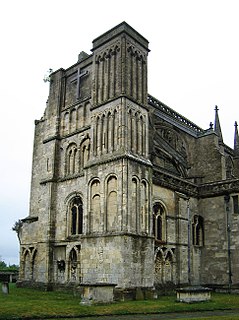
Back Mealdumesburh ANG مالمزبوری AZB Malmesbury BAR Malmesbury (lungsod) CEB Malmesbury Welsh Malmesbury Danish Malmesbury German Malmesbury Spanish Malmesbury Basque مالمزبوری Persian
| Malmesbury | |
|---|---|
 | |
Location within Wiltshire | |
| Population | 5,969 (2021 Census)[1] |
| Demonym | Jackdaws (in informal contexts—blason populaire) |
| OS grid reference | ST940857 |
| Unitary authority | |
| Ceremonial county | |
| Region | |
| Country | England |
| Sovereign state | United Kingdom |
| Post town | Malmesbury |
| Postcode district | SN16 |
| Dialling code | 01666 |
| Police | Wiltshire |
| Fire | Dorset and Wiltshire |
| Ambulance | South Western |
| UK Parliament | |
| Website | Town Council |
Malmesbury (/ˈmɑː(l)mzbəri/) is a town and civil parish in north Wiltshire, England, which lies approximately 14 miles (23 km) west of Swindon, 25 miles (40 km) northeast of Bristol, and 9 miles (14 km) north of Chippenham. The older part of the town is on a hilltop which is almost surrounded by the upper waters of the Bristol Avon and one of its tributaries.
Once the site of an Iron Age fort, in the early medieval period Malmesbury became the site of Malmesbury Abbey, a monastery famed for its learning. It was later home to one of Alfred the Great's fortified burhs for defence against the Vikings. Æthelstan, the first king of all England, was buried in the abbey when he died in 939. As a market town, it became prominent in the Middle Ages as a centre for learning, focused on and around the abbey.
In modern times, Malmesbury is best known for its abbey, the bulk of which forms a rare survival of the dissolution of the monasteries. The economy benefits mostly from agriculture, as well as tourism to the Cotswolds; Dyson is the town's main employer. At the 2021 census, the population of the parish was almost 6,000.
- ^ "Malmesbury". City population. Retrieved 25 October 2022.
